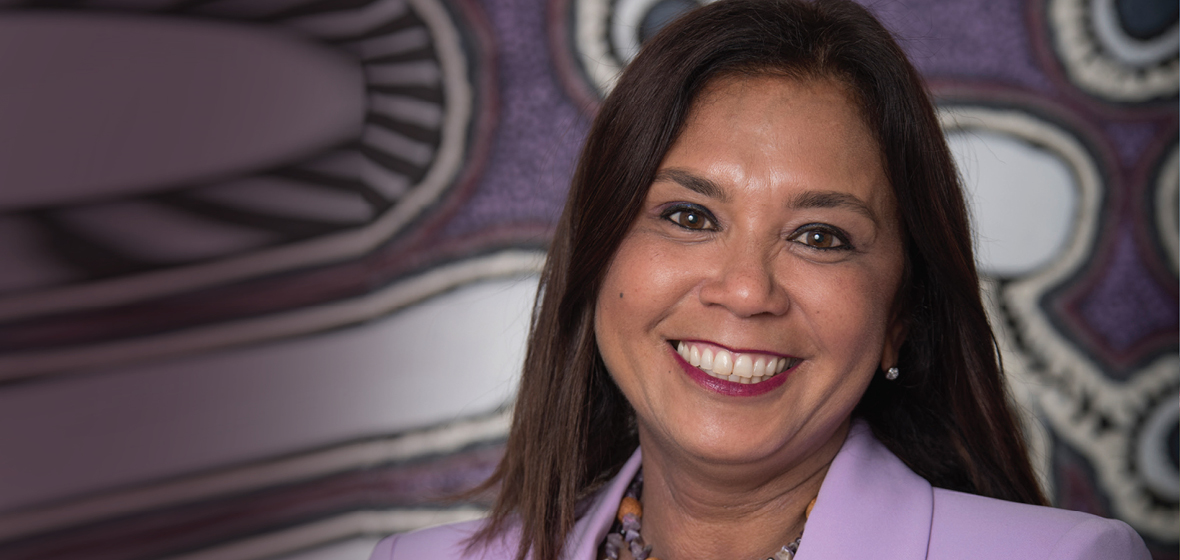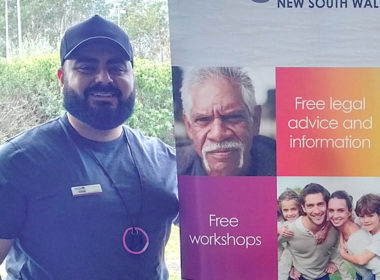Terri Janke is a Wuthathi/Meriam woman and leading expert in Indigenous culture and intellectual property. Her firm, Terri Janke and Company, seeks to bridge the gap between non-Indigenous businesses and Indigenous people in business. Janke tells us about an Indigenous copyright case that ignited her passion for law.
In 1994, I was involved in the Milpurrurru v Indofurn case that concerned the copyright of multiple Aboriginal artworks. A Perth-based company had used the artwork of eight Aboriginal artists to make carpets in Vietnam, which they imported into Australia. They then sold these carpets for lots of money without crediting or paying the artists.
At the time, I was working at an organisation called the National Indigenous Arts Advocacy Association (NIAAA). They joined the artists together and took action against the carpet company. It was an interesting case and I had been wanting to work in this area of law.
While working on the case, I met a Yolngu woman called Banduk Marika, who was one of the applicants. From her, I learnt about the importance of her art, the connection to culture, and how much it would mean to be able to use copyright law to stop these kinds of infringements.
I was young at the time – not yet admitted as a solicitor – but I was fortunate to be involved in many aspects of the case. I worked with the director of the NIAAA, Michael McMahon, then a solicitor. I was able to attend some of the meetings with IP barrister Colin Golvan, a huge player in copyright law in Australia, now an SC. I did admin, took notes and went to hear the case in the Federal Court in Darwin. I even drove the bus to get everyone there. It was so much fun to be a part of it and see it all happen.
For me, it was inspiring to see how the law could accommodate Indigenous artists’ rights after so many years of them having none. Prior to this judgment, people thought Aboriginal artwork was free to copy because it was old folk law, and therefore no-one owned it. For Aboriginal artists, this is far from the truth. Their work is so important to their identity and cultural beliefs, and they paint deep stories that are connected to ancestry power. For it to be copied and walked upon is incredibly offensive and demeaning. This case was the first judgment where Aboriginal people were recognised as copyright owners of their work.
The artists won the case and were awarded damages, some for cultural harm, which was really exciting because that was the first time that had happened in the Australian legal system. The judge recognised the Aboriginal artists had this anguish and could potentially be dispelled from their community and face repercussions, such as not being able to continue the iconography or the cultural story. That was pretty unique. The judgment was a good integration of how the federal court and common law recognised Indigenous rights and interests.
The case revealed that this was what I wanted to do. It really consolidated that this was the area I wanted to work in and set my career in motion. Not long after, in 2000, I opened my own law firm. It was scary, but I knew this was an area that needed to be developed and that Indigenous clients were looking for advice. I wanted to start a new cycle, one that was about Indigenous people having rights, ownership and control over their knowledge.
When I first started the firm, it was just me and there were no other Indigenous law firms doing commercial law. Now we’ve grown to a team of 11 and we do work internationally. We still have our connections from that case of Indigenous cultural and intellectual property.




